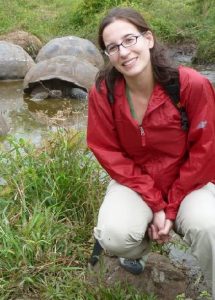When: Friday, May 24 2019
Time: 12:00 – 1:00pm (Eastern Daylight Time (EDT), UTC-4)
Title: “Identifying conservation areas within the Vilcabamba-Amboro Conservation corridor to support corridor connectivity”
Presenter: Dr. Florencia San Germano

Short Bio: Dr. Florencia Sangermano is a geographer specializing in conservation applications of geographic information systems (GIS), remote sensing, and landscape ecology. Her research focuses on climate and land cover change impacts on ecosystems and biodiversity through the lens of geospatial analysis, with the objective of supporting conservation planning and ecosystems management. Before joining Clark University as an Assistant Professor, Florencia worked Clark Labs, developing methods to facilitate the analysis of land cover change, as well as for the analysis of time series of satellite Earth observations. She has given capacity building and training workshops to support conservation applications of spatial analysis and remote sensing in North America, South America, and Europe. She holds a Ph.D. and M.A. in Geography from Clark University and a B.Sc./M.Sc. in Biology from Universidad Nacional de Mar del Plata, Argentina.
Abstract: The Vilcabamba-Amboro Conservation Corridor (VACC) is located in the tropical Andes. It extends from the lowland humid forest ecosystems through the cloud forest to alpine grassland and scrublands, and it is considered a hotspot of biodiversity, with record numbers of plants, butterflies and birds. Although the corridor and its surroundings have low population density, the area is currently threatened by the expansion of the agricultural frontier, and from extractive activities of oil and mining. Facing high human threat, maintaining the connectivity of this corridor of protected areas is essential to guarantee the movement of species, gene flow and metapopulation dynamics. This work evaluates forest morphology changes over 16 years across the corridor and relates them to impacts on species movements though a model based on circuit theory with the objective of identifying potential conservation areas.
>> Register Now
